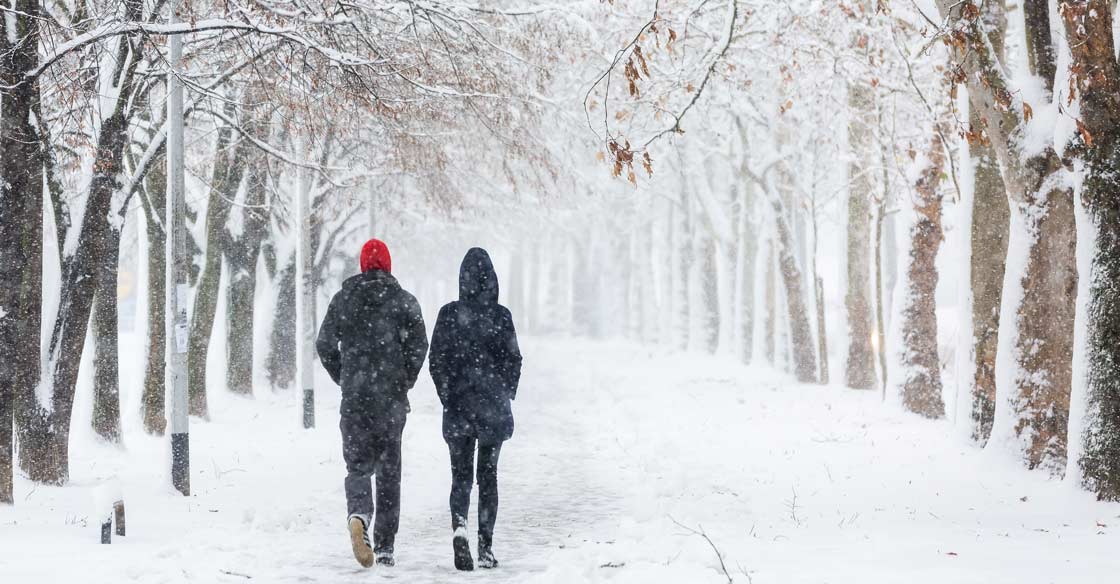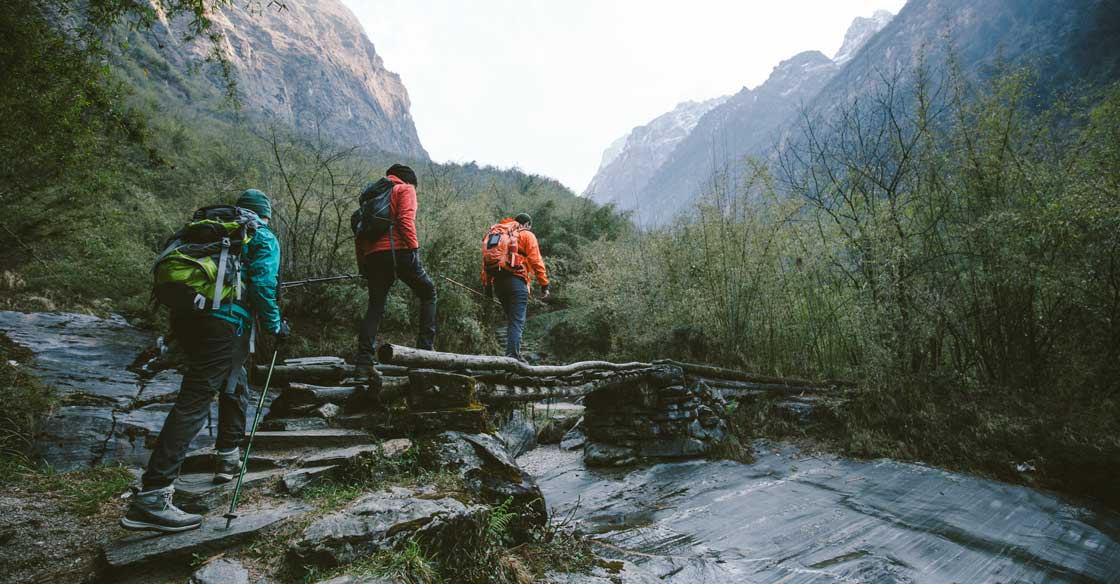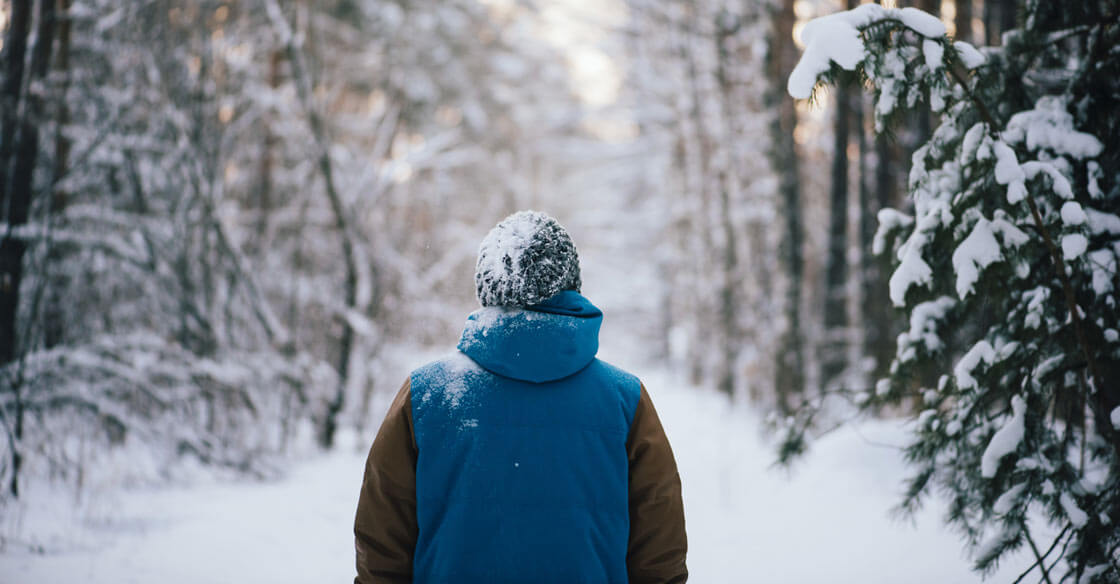
Why are Heat Warmers Beneficial for Everyday Life? 0
Imagine cleaning your lawn in the winter. Awful, right? Routine life is challenging during winters whether it’s for shopping, outdoor activities, work, or the usual chores. Hands and feet are directly exposed to the chilly weather, yet have a lot of work to do. Your winter wardrobe protects you from freezing but doesn’t really keep you warm. That’s when you realize that heat warmers are essential for your body to beat the winter.
Types of Heat Warmers
Heat warmers aren’t just meant for camping gear or other outdoor winter activities. They are designed in various styles to suit your everyday life needs in varying cold temperatures.
1. Hand Warmers: The frustrating part of winters is having to work with freezing hands. You can’t use your phone or manage your keys with your gloves on and without gloves, you can barely feel your hands. The situation would be different if you could tuck your hands in a pocket with hand warmers. Hand warmers can last up to 10 hours, are small, and can easily fit in your pockets to warm your hands.
2. Foot Warmers: Cold feet are the most stressed when you are jogging, walking, or in the car. Chilly feet can be painful, often with a stinging sensation and difficult to warm up. Foot warmers are the perfect and simple solution. They are designed to slide into your boots to keep your feet warm and allow you to move around comfortably. Foot warmers can also be used to revitalize tired, sore feet.
3. Body Warmers: Working outdoors in dipping temperatures can shiver your body’s core, increase the blood pressure, and discomfort your vital organs. Even a short walk from the parking lot to your office can be tedious. Bodywarmers provide continuous warmth and protect your core from sudden chills while also keeping your body insulated. They can also be an ideal addition when layering for winter.
Uses and Benefits of Heat Warmers
- Hand, foot, and body warmers work immediately so you don’t have to wait to feel the warmth.
- They keep you warm for up to 2 hours.
- You can use these warmers to relax your tired feet and ease muscle and joint pains that tend to increase in cold months.
- Bodywarmers can be useful when you are down with a cold. They keep your chest warm, soothe your sinuses, and help loosen congestion.
- Even though these warmers are an addition to your attire, they are neither bulky nor visible so you don’t have to bear extra weight or an unpleasant alteration to your outfit.
- Hand warmers can also be used to soothe frostbites on nose, ears, cheeks, and chin, which are common if you are out in the cold for long. They are perfect for when you are working on a hiking trip plan.
Heat warmers are undoubtedly a practical choice to help you pull through the cold weather when coffee isn’t working and a cozy blanket isn’t an option. This is notably true if you want to flaunt boots and coats that are fashionable but can’t keep you warm in frigid temperatures.
- Caroline Mayou
- Tags: The Outdoor Mom

The Ultimate Guide to Planning a Hike — Tips and Equipment 0
A hike can be anything from a short walk on a weekend to a proper adventure spanning over a period of weeks. Planning a hike properly will allow you to make the most of the time you have and help you start training for a bigger endeavor in the future.
Planning a Hike Route
Before you start planning your hike, you need to figure out how you’ll reach the starting point. If you’re revisiting a spot or heading out to somewhere near you, this is easy. However, if you’re hiking to a new place, there are extra considerations. For instance, if you’re not driving, you’ll need to find out how much transport costs and whether you’ll need to pay extra to bring your equipment.
Once you’ve figured all this out, it’s time to start planning a hiking route and look over your hiking gear list. Decide on how much ground you can expect to cover — and be realistic. Many places have several trails of different lengths, meaning you can find one that best suits your needs. Remember to bear in mind the type of terrain — you’ll be able to cover much more ground when the trail is flat than when it’s mountainous.
Researching the Weather
In advance, research the average temperature and weather for the time of year. This will give you time to purchase all the gear you may need. Then, you can check the forecast the day before and take just what is most appropriate.
If the weather is likely to be cold, you’ll need extra provisions. Heat warmers are excellent for keeping you comfortable. Depending on the temperature and whether you’ll be camping, consider if you would benefit from hand, body, or foot warmers when planning a hike. They are especially necessary for the winter cold, however, if you are hiking overnight they will help keep you warm. The large body warmers will protect you from the harsh outdoor weather.
Another thing to keep in mind in mind if you’re camping is the warmth of your sleeping bag. Note that it will become less warm as your trip progresses due to the accumulation of moisture.
Booking Accommodation
When backpacking long-trails, you may need to book accommodation. Even if you plan to sleep wild most nights, you’ll probably want to use the facilities at a campsite on occasion. Plus, those who prefer to sleep in comfort need to research B&Bs when planning a hike. Whatever you’re doing, it’s a good idea to book in advance to ensure that where you want to stay will be open and will have space for you.
Being Flexible
When planning you plan a hike, remember that it may be necessary to adapt your schedule as you go. You must be willing and prepared to be flexible. For instance, you may find that you’re unable to walk as far as you planned or the climate may be more challenging than you expected. It’s particularly important to be flexible when hiking if you’ve never undertaken a similar venture before.
Part of planning a hike involves making a list of all the equipment you need to stay safe and comfortable. Invest in quality gear to make your hike more enjoyable and remember to stay warm, especially during cold weather camping!
- Caroline Mayou
- Tags: The Outdoor Mom

Layering Basics for Outdoor Activities in the Winter 0
With winter setting in, if you’re like us, you can’t help but look forward to the plethora of activities that you can partake in. Whether it’s snowshoeing or if you’re so inclined, outdoor camping, you need to suit yourself upright to ensure you don’t expose yourself to sub-zero temperatures that can sap your body heat in a flash.
Your body is always losing heat through thermal radiation; however, in cold weather, the heat loss is expedited by the dipping temperatures. Therefore, dressing up for the winter isn’t as simple as donning a heavy coat, layers of flannel and a fuzzy hat. Your winter clothes need to do more than just keep the cold from coming into contact with your body: they also need to keep you from losing heat through sweating or moisture, trap your body heat, and prevent cold air from convecting the heat away from your body.
Therefore, while layering your clothes and adding warmers, you also need to combine all the above functions to help you stay warm and dry during your activities. To begin with, your winter activity apparel should comprise the following three basic layers:
Base Layer
This is the layer that lies next to your skin: its primary purpose is to draw or wick the moisture away from your body, dry quicker and regulate your body temperature. This layer should, therefore, be tight-fitting or snug and made from water-resistant fabrics like polyester, silk or merino wool. However, you should never use cotton for your base layer: it can retain moisture up to 27 times its dry weight and is slow to dry. Clothes in this layer include briefs, long underwear, t-shirts, and tights.
Insulating Layer
The middle insulating layer, as the name implies, retains the heat by trapping the air and keeping it close to your body. This layer can be made of either natural fiber, like wool or down, or a synthetic material like fleece or polyester. The choice of the fiber depends on the weather conditions and the type of activity you’re planning for. For instance, merino wool can keep you warm even in wet conditions, whereas, goose down is more practical for dry weather. For high-energy activities like cross-country skiing or running, you’ll be better served with synthetic fibers like polyester and fleece.
Shell Layer
This is the outermost layer which protects you from the rain, wind, and snow. They are generally designed to let some perspiration escape and treated with durable water-repellant to make water roll off the surface easily. This layer should be big enough to fit over all your other layers without constricting your movement. Shell layers fall into a number of categories depending on the function:
- Waterproof and breathable shells which are ideal for wet, cool conditions and alpine conditions
- Water-resistant and breathable shells which are best for light precipitation and for blocking wind during high-energy activities.
- Soft shells which are breathable and are made for aerobic activities in cold or mild weather conditions.
- Water-proof but non-breathable shells usually made of polyurethane nylon, which is ideal for light activities for fishing or sight-seeing.
- Insulated shells which usually come with an insulating layer of fleece which are built for cold and wet weather, but don’t suffice in fluctuating weather conditions.
Now that we’ve got the basic layers, here are a few more tips on bundling up:
- Don’t forget your head and hands: Include a warm winter hat that covers your ears, preferably made from synthetic fiber or wool. For your hands, invest in warm, waterproof gloves that allow for mobility in your fingers. You can also add hand warmers inside your gloves to provide more warmth against the cold air.
- Look after your feet: You’ll need sturdy, water-resistant hiking boots or ski boots (depending on your activity), paired with wool socks or foot warmer insoles to protect your feet against the cold winter snow and air.
- Keep extra layers on hand for both pre and post activity times. You don’t want to lose what little heat you have before you reach home after your activity. You can always add body warmers that can help preserve your body temperature and prevent any heat loss.
- Consider your comfort level. Try all your layers out to ensure they fit over each other and don’t restrict free movement.
What winter activities are you planning this year? Tell us how you plan to layer up for those activities.
- Caroline Mayou
- Tags: The Outdoor Mom

5 Fun Activities To Play With Your Kids While Camping 0
As new parents, we've all gone through it. As outdoors-men (women), we're used to going into nature to do our favorite activity. But once kids come into the picture, your solo adventure isn't the same, and it can be hard to incorporate your children into your outdoor trips. We've created a list of some of our favorite outdoor activities that are designed for children:
1. Scavenger Hunt: Kids love scavenger hunting, and nature is an ideal place to hold a scavenger hunt. Have each player gather things like pine cones, different types of leaves, shells, pine needles, etc. Before the game begins, talk about each item they're looking for and discuss it's origin and its importance in our ecosystem. Assign each player a buddy, or another player and designate a team name for each pair of players. Put a time frame on each item that is being searched and encourage them to use a watch to keep time. If you'd like to teach your kids about navigation, give them instructions on the use of a compass. The winners get first dibs on marshmallows and the unsuccessful group makes and serves the marshmallows at the fire that night. When you get home, have them glue their findings onto a board as a reminder of their last trip and the things they learned.
2. Rainy Day Explorers: You may have imagined an abundance of sunny days for your planned outdoors trip, but as the song goes, "You can plan a pretty picnic but you can't predict the weather." Your now aced with mist, sprinkle, full scale rain or snow. On the off chance that conditions aren't excessively serious, stay put and enjoy the rain! Pack additional socks and a change of footwear for everybody. If you have them available, pack raincoats and elastic boots. Have fun jumping in puddles and strolling through forested areas (unless you're in company of lightning). When you return to the site, teach your children how to dry out clothes and keep warm in emergency situations. For example, you can teach your children the more important parts on the body to keep warm when facing hypothermia. You can also teach them small tricks, like using hand warmers to dry out shoes or GPS systems.
3. Get A Nature Manual: "When you're in nature, be interested in nature" says Tovah Paglaro, the David Suzuki Foundation's Queen of Green. "The children will love to take in the names and properties of the plants and creatures around you. You could even keep a log book and look at the changed normal finds in better places you visit." For additional outdoors motivation, hit up Pinterest (gleam stick ring hurl, anybody?). In case you're enjoying the great outdoors at a national stop, Parks Canada has a program for children called Xplorers that is incorporated with the consistent section expense. Kids get a booklet loaded with fun exercises. When they finish them, they get an official Xplorers testament and a collectible keepsake. Here is the website for Parks Canada.
4. Camping Olympics: This could stand out as one of the best time you've ever had with your family. Long hop should be possible on a sandy shoreline, transfer races in an open range, and swimming rivalries in the water. Get a rope and arrange a group tug-a-war. Keep the tone light and sort out recreations that more youthful children can appreciate as well, such as skipping stones. Use this as an opportunity to teach your kids about competition and being humble.
- Caroline Mayou
- Tags: The Outdoor Mom

Composting Warmers: The Gardener's Dream Soil 0
Gardening is an art that can also bring us the satisfaction of protecting our environment on a personal level. Every serious gardener shares the same obstacle- creating the perfect soil. And today, we're going to share the four main ingredients that can make the gardener's dream soil. They are as follows:
- Coconut Fiber/ Saw Dust: A byproduct having no alternative use than enriching anything it gets its little molecules on makes this a viable and inexpensive nutrient for the soil. Both coconut soil and sawdust help to correct soil erosion and promote health in all types of plants.
- Sand and Regular Garden Soil: As much as people hate sand, it helps in structuring the soil, making it more water retentive and allowing for plants to create stronger roots.
- Vegetable Peel/Fruit Peel/ Leaves/ Animal Waste/Etc.: The role of these is to provide inexpensive, yet powerful nutrients to enrich the soil with powerful minerals. This is a natural substitute for fertilizer which is expensive and can cause damage to the environment in the long run.
- Worms For Vermi Compost: Worms can help the soil in two ways. First, they eat dead leaves and pass their waste in the soil thereby enriching the soil. Their movements in the soil develop air pockets which allows plants to breathe.
Layering these four ingredients is essential and the most important part of the recipe. Worms play a major role when they feed on the organic waste as this is what leaves nutrient rich soil as an end product.
Vermiculite is an alternative to the coconut fiber/ saw dust where the purpose of both is to improve water retention capacity and aeration of the soil. Vermiculite looks like mica but it is also a mineral that can be found in mines in different parts of the world. It contains a group of minerals called aluminium-iron-magnesium silicate.
Hand warmers (yes, the small disposable packs that warm your hands) product are a fantastic resource for your garden. Hand warmers can be used during Winter to carry out gardening work and to protect gardeners and farmers from the excessive cold. Hand warmers contain a chemical mixture of ingredients that product heat through an exothermic reaction when exposed to oxygen. The chemical composition of a warmer in layman's terms is iron, vermiculite, activated carbon, cellulose and salt.
Heat Factory hand warmers have no toxic chemicals labeled in them, which makes its ingredients combined with the organic compost a perfect way to enrich soil with minerals.
Perhaps, disposing non-toxic warmers into compost is a green idea rather than throwing them in the trash that eventually goes into a landfill. Dig up your soil and set the ingredients underneath it, to let it decompose in the long-run. Using hand warmers in your compost is cost-effective, and you'll have warmth and nutrients all year round.
- Caroline Mayou
- Tags: The Outdoor Mom

Warmers For Menstrual Cramps 0
Many women must take off work every month because of menstrual cramps. Others are not affected so badly but still remain sitting there in pain, feeling bad and unfulfilling. Menstrual cramps are pains in the lower abdomen. Many women experience these pains just before and during their menstrual periods. Some women are even bedridden by this discomfort, often having to miss work or school and to cancel other plans. Reports vary on the data collection methods, but there is no doubt that women suffer distress with menstrual cramps is a widespread problem.
For some women, the discomfort is merely annoying. For others, menstrual cramps can be painful enough to disturb the day’s activities and throughout the month. Menstrual cramps are one of the most common reasons for women to see their doctor. The pain of menstrual cramps can range from mild to severe and can involve the abdomen, back or thighs. You can also develop dizziness, nausea, headaches, or fainting, or diarrhea or constipation with your cramps.
However, it is well known that hand warmer can really help to take the edge of the pain, whether you're at your desk, in the car, in school, curled up on the couch or in bed trying to sleep. The heat factory hand warmers are chemical hand warmers which work by producing an exothermic reaction when used in a covered area- under clothing, in a pocket. Hand warmers are very light and an emergency kit in a vehicle or pack. They are helpful if you experience trouble keeping your hand warm during menstrual cramps. It can also be perfect for women when camping, hunting, and fishing or during cold winter. With these hand-warming devices, you can be sure of quick and easy way to stay warm.
The heat factory hand warmers are activated by air through the process of oxidation and provide 10 hours of soothing warmth inside the gloves, pockets or wherever you feel a thrill. When exposed to air, these materials react together to produce heat through extremely fast oxidation process and it is perfect for women with cramps and pain associated with menstrual cycles.
This hand warmer goes even further to make your life better at that time of the month. It instantly warms to a pleasant temperature degree, so you don’t really need a microwave or hot water to heat up. This is perfect for when you're traveling, running for a meeting or when you are in bed. The other great thing about the hand warmer is that it is small, light and useful anywhere. This is perfect for keeping you warm outside, playing soccer, hiking and just about anything you want to do.
Hand warmer is the ultimate heating solution for the relief of pain from menstrual cramps. There is no need of microwave, they are ideal for when you're traveling, at the office or at home.
Medical studies show that hand warmer is effective for pain relief from menstrual cycle and helps to reduce stress and promote relaxation. It has been used for ages as a remedy to enhance the natural recovery process. Hand warmer also allow the flow of blood in the body, which reduces the pain from menstrual cycle and provides soothing comfort. It proffers the best and ideal treatment for chronic pain from menstrual cramps and arthritis.
Some of the benefits of heat factory hand warmers are that they're really portable, odorless, disposable, safe, non-toxic, non-flammable, friendly, and contains all natural substances. You can have one in your purse and use it anywhere you want. It can keep you stay warm for as long as 10 hours. All you need to do is to expose the hand warmer to the air; an oxidation process takes place that generates heat. You are encouraged to keep them in your pockets and just hold them when you are feeling pains. It can be a great comfort during menstrual cramps. Never again will you have to get worried when you are in cold winter, snowboarding, in a meeting, in the plane, hiking and skiing.
Finally, always ensure that you treat yourself with Heat factory hand warmers packs, because you deserve it!
- Caroline Mayou
- Tags: The Outdoor Mom

